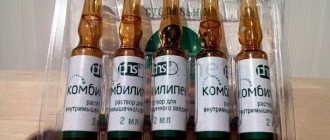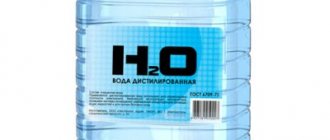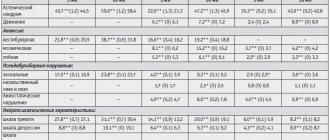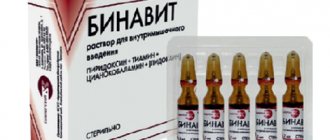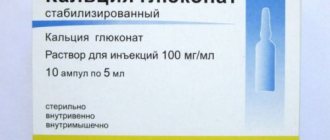general information
Longidase for injection is produced in the form of a yellow powder made by lyophilization. The active component is the enzyme hyaluronidase. The drug has a wide range of applications. The effect after therapy with a molecular complex lasts for a long time. Longidaza is taken to block swelling, remove hematomas and non-healing scars. The drug blocks acute inflammatory processes when used at the initial stage of diseases.
It is advisable to use the medication for problems with the immune system, frequent infectious diseases, and viruses.
Injections with a molecular complex are carried out to prevent fibrosis and eliminate the likelihood of scar enlargement after surgery. The drug does not have a toxic effect on the human body, it does not affect the functioning of the reproductive and immune systems, does not cause the development of allergic reactions, and does not increase the duration of rehabilitation after surgery. Due to mannitol, which is part of the molecular complex, injections have a diuretic effect and relieve excessive swelling.
Directions for use and dosage
The solution is injected under the skin (near the lesion) or intramuscularly. Intravenous administration of the molecular mixture is prohibited. The prepared solution is used once. Storing it in the refrigerator is also prohibited. The standard dosage of one injection is 3000 ME. The course of treatment with the drug ranges from 5 to 25 injections. There should be 3-10 days between procedures. There are a number of nuances of using Longidase for various pathologies:
- For chronic tissue damage, the drug is used as a supporting complex and injected under the skin once every 2 weeks.
- If it is necessary to get rid of hematomas and joint diseases, the molecular mass is injected under the skin. If the patient is concerned about non-healing scars, the intra-scar method is used to administer the drug, alternating with the intramuscular one.
- For tuberculosis, long-term treatment with Longidase is required, lasting more than six months. The injections are administered intramuscularly.
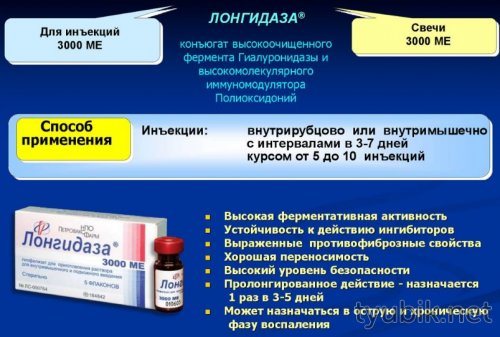
A molecular solution is sometimes used to enhance the effect of antibiotic drugs. In such cases, take an ampoule of 1500 ME, inject it intramuscularly, and 15 minutes later into the same place where the Longidase injection was given.
How to inject the medication?
Injections with molecular weight are carried out according to the standard scheme intramuscularly or subcutaneously. Initially, the needle is inserted into the upper layer of the skin, then the syringe is gently pressed, controlling the force. Many medical professionals advise changing the needle after taking the finished medicinal mixture. The step-by-step steps for performing injections are as follows:
- Rub the area where the solution will be injected with an alcohol wipe or cotton pad soaked in alcohol.
- Take a disposable syringe and draw the molecular solution into it. Usually the product is mixed with 2 ml of procaine or water (depending on the disease).
- Place the needle at a right angle relative to the surface of the patient's body.
- Gather the skin a little with the fingers of one hand, without touching the muscle. As a result, a fold should form.
- The needle is quickly inserted under the skin.
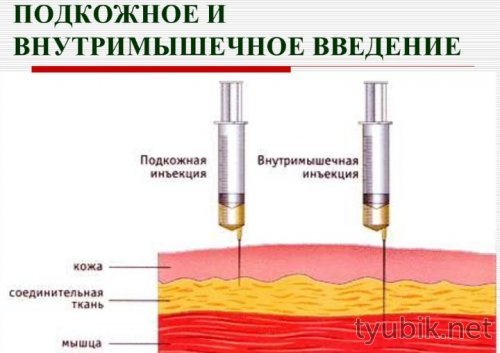
The syringe plunger must be pressed slowly so that the solution is distributed evenly. If the patient uses an insulin syringe with a small needle, then it can be completely inserted under the skin. Usually the drug is well tolerated by sick people, but if the dosage is calculated incorrectly, an allergic reaction may occur.
Longidaza lyophilisate for the preparation of solution for injection 3000 IU ampoules 5 pcs
Longidaza® is used subcutaneously (near the site of the lesion or under scar tissue) or intramuscularly at a dose of 3000 IU in a course of 5 to 25 injections (depending on the disease) with an interval between injections of 3 to 10 days.
Methods of application are selected by the doctor depending on the diagnosis, severity of the disease, clinical course, and age of the patient. If necessary, a repeat course is recommended after 2-3 months.
In the case of treatment of diseases accompanied by a severe chronic productive process in the connective tissue, after a standard course, long-term maintenance therapy with Longidaza® 3000 IU is recommended with breaks between injections of 10-14 days.
To increase the bioavailability of drugs and diagnostic agents, a dose of 1500 IU is recommended with preliminary intramuscular or subcutaneous administration 10-15 minutes into the same place as the main drug.
Dilution: 1. The contents of the ampoule or bottle of Longidaza® 3000 IU are dissolved in 1.0-2.0 ml of procaine solution (0.25% or 0.5%). In case of intolerance to procaine, Longidaza® is dissolved in the same volume of 0.9% sodium chloride solution for injection or water for injection. 2. When used to increase bioavailability, the contents of the ampoule or vial of Longidaza® 3000 IU are dissolved in 2.0 ml, and with a dosage of 1500 IU in 1.0 ml of 0.9% sodium chloride solution for injection. The solvent must be introduced into the bottle or ampoule slowly, wait for 2-3 minutes, and carefully mix without shaking so as not to foam the protein. The prepared solution for parenteral administration cannot be stored. Do not administer intravenously!
Recommended regimens and doses:
For the prevention of adhesive disease and severe scarring after surgical interventions on the abdominal and pelvic organs, intramuscularly at a dosage of 3000 IU once every 3 days for a course of 5 injections. If necessary, the use of Longidaza® can be continued with a total course of up to 10 injections administered once every 5 days.
For treatment.
in gynecology: - adhesions in the pelvis for inflammatory diseases of the internal genital organs, intramuscularly at 3000 IU once every 3-5 days for a course of 10-15 injections; — tubo-peritoneal infertility intramuscularly at 3000 IU in a general course of up to 15 injections: the first 5 injections 1 time in 3 days, then 1 time in 5 days;
in urology: - chronic prostatitis intramuscularly at 3000 IU once every 5 days, a course of 10-15 injections; — interstitial cystitis intramuscularly, 3000 IU once every 5 days, for a course of up to 10 injections;
in surgery: - adhesive disease after surgical interventions on the abdominal organs intramuscularly at a dosage of 3000 IU once every 3-5 days for a course of 10 to 15 injections; - long-term non-healing wounds intramuscularly at a dosage of 3000 IU once every 5 days for a course of 5-10 injections;
in dermatovenereology, cosmetology: - limited scleroderma intramuscularly at 3000-4500 IU once every 3-5 days for a course of up to 20 injections. The dosage and course are selected individually depending on the clinical course, stage, location of the disease and the individual characteristics of the patient; - keloid, hypertrophic and developing scars after pyoderma, burns, operations, injuries: intra-scar or subcutaneous injection near the site of the lesion once every 3 days, for a course of up to 15 injections at a dosage of 3000-4500 IU. The volume of dilution of Longidaza® is selected by the doctor depending on the number of injection points. If necessary, the course can be continued according to the scheme once every 5 days up to 25 injections. Depending on the area of skin damage and the age of scar formation, it is possible to alternate subcutaneous and intramuscular administration once every 5 days at a dosage of 3000 IU, for a course of up to 20 injections.
in pulmonology and phthisiology: - pneumosclerosis intramuscularly at 3000 IU once every 5 days for a course of 10 injections; — fibrosing alveolitis intramuscularly at a dosage of 3000 IU once every 5 days for a course of 15 injections, then maintenance therapy once every 10 days for a total course of up to 25 injections; — tuberculosis intramuscularly at a dosage of 3000 IU once every 5 days for a course of up to 25 injections; depending on the clinical picture and severity of the disease, long-term therapy is possible (from 6 months to 1 year at a dosage of 3000 IU once every 10 days);
in orthopedics: - joint contractures subcutaneously near the lesion site at a dosage of 3000 IU once every 3 days for a course of 5 to 15 injections; - arthrosis, ankylosing spondylitis subcutaneously near the site of the lesion at a dosage of 3000 IU once every 3 days for a course of up to 15 injections; if necessary, treatment can be continued with injections once every 5 days. The duration of maintenance therapy is selected by the doctor depending on the severity of the disease; — hematomas subcutaneously near the site of the lesion at a dosage of 3000 IU once every 3 days for a course of up to 5 injections;
to increase bioavailability: when administered subcutaneously or intramuscularly with diagnostic or medicinal drugs (antibiotics, chemotherapy drugs, anesthetics, etc.). Longidaza® is pre-administered 10-15 minutes in advance at a dosage of 1500 IU in the same way and in the same place as the main drug.
Features of using Longidase
The drug product should be used with caution in old age, as well as during pregnancy and lactation. As practice shows, elderly patients favorably tolerate the effects of the drug when the dosage is correctly selected. However, during therapy it will be necessary to constantly monitor their condition, especially if the sick person is treated with additional drugs. The possibility of adverse reactions in this case cannot be ruled out.
During pregnancy, subcutaneous injections of Longidase are prohibited.
The same applies to the period of breastfeeding. It is prohibited to administer the drug to persons under the age of majority.

The molecular complex is prohibited for use in cases of open internal bleeding, malignant neoplasms, and renal failure. If you are sensitive to individual components in the composition, it is necessary to inject with a decongestant under the strict supervision of a physician.
Special instructions for use
Longidaza is not toxic or dangerous to human health if certain rules are followed during therapy. If a patient uses Longidase independently as a maintenance agent for chronic tissue pathologies, he must notify the doctor about each course of treatment begun. The doctor should find out what additional medications the sick person is taking to prevent the development of adverse reactions. It is prohibited to inject the solution into the area of acute focal inflammation caused by infection. Injecting the product may allow the spread of infection.
If the patient misses one dose of the medication, he does not need to take a double dosage the next time. The solution is administered in the same mode.
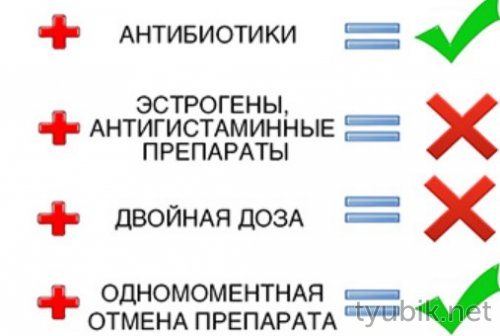
If a doctor has prescribed Longidaza to a patient with kidney pathology, it should be administered no more than once a week. A molecular medicinal product does not belong to the category of drugs for the use of which restrictions are imposed on the implementation of a specific type of activity. While on Longidase therapy, you can drive a car or other vehicle. If adverse reactions occur, especially those that are not prescribed in the instructions, you must call a doctor at home.
LONGIDAZE lyophilized powder for the preparation of solution for infusion 3000me No. 5
Longidaza is applied subcutaneously (near the site of the lesion or under scar tissue) or intramuscularly at a dose of 3000 IU in a course of 5 to 25 injections (depending on the disease) with an interval between injections of 3 to 10 days. Methods of application are selected by the doctor depending on the diagnosis, severity of the disease, clinical course, and age of the patient. If necessary, a repeat course is recommended after 2-3 months. In the case of treatment of diseases accompanied by a severe chronic productive process in the connective tissue, after a standard course, long-term maintenance therapy with Longidaza is recommended with breaks between injections - 10-14 days. To increase the bioavailability of drugs and diagnostic agents, a dose of 1500 IU is recommended with a preliminary 10-15 minutes intramuscular or subcutaneous injection into the same place as the main drug. Dilution The contents of the Longidaza ampoule or bottle are dissolved in 1-2 ml of procaine solution (0.25% or 0.5%). In case of intolerance to procaine, the drug is dissolved in the same volume of 0.9% sodium chloride solution for injection or water for injection. When used to increase bioavailability, the contents of the Longidaza ampoule or vial are dissolved in 2 ml, and with a dose of 1500 IU - in 1 ml of 0.9% sodium chloride solution for injection. The solvent must be introduced into the vial or ampoule slowly, wait for 2-3 minutes, and carefully mix without shaking so as not to foam the protein. The prepared solution for parenteral administration cannot be stored. Do not administer IV! Recommended prevention and treatment regimens For the prevention of adhesive disease and severe scarring after surgical interventions on the abdominal and pelvic organs IM at a dose of 3000 IU 1 time every 3 days for a course of 5 injections. If necessary, the use of the drug can be continued with a general course of up to 10 injections when administered once every 5 days. For treatment in gynecology: adhesions in the pelvis for inflammatory diseases of the internal genital organs - intramuscularly once every 3-5 days for a course of 10-15 injections; tubo-peritoneal infertility - IM with a general course of up to 15 injections: the first 5 injections 1 time in 3 days, then - 1 time in 5 days. in urology: chronic prostatitis - intramuscularly once every 5 days, in a course of 10-15 injections; interstitial cystitis - intramuscularly once every 5 days, for a course of up to 10 injections. in surgery: adhesive disease after surgical interventions on the abdominal organs - intramuscularly once every 3-5 days for a course of 10 to 15 injections; long-term non-healing wounds - intramuscularly once every 5 days with a course of 5-10 injections. in dermatovenereology, cosmetology: limited scleroderma - intramuscularly once every 3-5 days for a course of up to 20 injections. The dose and course are selected individually depending on the clinical course, stage, location of the disease and the individual characteristics of the patient; keloid, hypertrophic and developing scars after pyoderma, burns, operations, injuries - intra-scar or subcutaneous injection near the site of the lesion, administration 1 time every 3 days, for a course of up to 15 injections at a dosage of 3000-4500 IU. The volume of dilution of the drug Longidaza is selected by the doctor depending on the number of points of administration. If necessary, the course can be continued according to the scheme once every 5 days up to 25 injections. Depending on the area of skin damage and the age of scar formation, alternating subcutaneous and intramuscular administration is possible once every 5 days at a dose of 3000 IU, for a course of up to 20 injections. in pulmonology and phthisiology: pneumosclerosis - intramuscularly once every 5 days for a course of 10 injections; fibrosing alveolitis - intramuscularly once every 5 days for a course of 15 injections, then maintenance therapy once every 10 days for a total course of up to 25 injections; tuberculosis - intramuscularly once every 5 days for a course of up to 25 injections; Depending on the clinical picture and severity of the disease, long-term therapy is possible (from 6 months to 1 year at a dose of 3000 IU once every 10 days). in orthopedics: joint contractures - subcutaneously near the site of the lesion at a dose of 3000 IU once every 3 days for a course of 5 to 15 injections; arthrosis, ankylosing spondylitis - subcutaneous injection near the site of the lesion in a dose of 3000 IU once every 3 days for a course of up to 15 injections, if necessary, treatment can be continued with injections once every 5 days. The duration of maintenance therapy is selected by the doctor depending on the severity of the disease; hematomas - subcutaneously near the site of the lesion at a dose of 3000 IU once every 3 days for a course of up to 5 injections. To increase bioavailability: when administered subcutaneously or intramuscularly with diagnostic or medicinal drugs (antibiotics, chemotherapy drugs, anesthetics and others), Longidase is administered 10-15 minutes beforehand at a dose of 1500 IU in the same way and in the same place, as the main drug.
Candles or solution: which is better?
Which is better: Longidaza suppositories or injections - this is asked by many patients who are faced with pathologies of a dermatological and inflammatory nature. As practice shows, both forms of the drug are equally used to treat pathologies of various etiologies. The doctor selects the right remedy, based on the characteristics of the disease of a particular patient.
| Medical field | Urology | Gynecology | Dermatology |
| Acceptable form of use | In urology, it is advisable to use Longidaza in the form of rectal suppositories for the treatment of diseases such as inflammation of the prostate gland, interstitial cystitis, and prostate hyperplasia. | In gynecology, during surgical abortions, as well as after some other operations, vaginal suppositories are prescribed | For the treatment of hypertrophic and keloid scars, as well as connective tissue pathologies, the drug is used in the form of injections |
In surgery, after operations, or for long-term non-healing wounds, both suppositories and injections are prescribed. To normalize the functioning of the joints, namely with scar tissue changes, limited mobility, and ankylosing spondylitis, in most cases Longidaza is prescribed intramuscularly, but sometimes suppositories are also prescribed. In pulmonology, the drug is used in the form of injections, but the use of suppositories is also acceptable.

Longidaza
Longidaza® is used subcutaneously (near the site of the lesion or under scar tissue) or intramuscularly at a dose of 3000 IU in a course of 5 to 25 injections (depending on the disease) with an interval between injections of 3 to 10 days.
Methods of application are selected by the doctor depending on the diagnosis, severity of the disease, clinical course, and age of the patient. If necessary, a repeat course is recommended after 2-3 months.
In the case of treatment of diseases accompanied by a severe chronic productive process in the connective tissue, after a standard course, long-term maintenance therapy with Longidaza® 3000 IU is recommended with breaks between injections of 10-14 days.
To increase the bioavailability of drugs and diagnostic agents, a dose of 1500 IU is recommended with preliminary intramuscular or subcutaneous administration 10-15 minutes into the same place as the main drug.
Dilution: 1. The contents of the ampoule or bottle of Longidaza® 3000 IU are dissolved in 1.0-2.0 ml of procaine solution (0.25% or 0.5%). In case of intolerance to procaine, Longidaza® is dissolved in the same volume of 0.9% sodium chloride solution for injection or water for injection. 2. When used to increase bioavailability, the contents of the ampoule or vial of Longidaza® 3000 IU are dissolved in 2.0 ml, and with a dosage of 1500 IU in 1.0 ml of 0.9% sodium chloride solution for injection. The solvent must be introduced into the bottle or ampoule slowly, wait for 2-3 minutes, and carefully mix without shaking so as not to foam the protein. The prepared solution for parenteral administration cannot be stored. Do not administer intravenously!
Recommended regimens and doses:
For the prevention of adhesive disease and severe scarring after surgical interventions on the abdominal and pelvic organs, intramuscularly at a dosage of 3000 IU once every 3 days for a course of 5 injections. If necessary, the use of Longidaza® can be continued with a total course of up to 10 injections administered once every 5 days.
For treatment.
in gynecology: - adhesions in the pelvis for inflammatory diseases of the internal genital organs, intramuscularly at 3000 IU once every 3-5 days for a course of 10-15 injections; — tubo-peritoneal infertility intramuscularly at 3000 IU in a general course of up to 15 injections: the first 5 injections 1 time in 3 days, then 1 time in 5 days;
in urology: - chronic prostatitis intramuscularly at 3000 IU once every 5 days, a course of 10-15 injections; — interstitial cystitis intramuscularly, 3000 IU once every 5 days, for a course of up to 10 injections;
in surgery: - adhesive disease after surgical interventions on the abdominal organs intramuscularly at a dosage of 3000 IU once every 3-5 days for a course of 10 to 15 injections; - long-term non-healing wounds intramuscularly at a dosage of 3000 IU once every 5 days for a course of 5-10 injections;
in dermatovenereology, cosmetology: - limited scleroderma intramuscularly at 3000-4500 IU once every 3-5 days for a course of up to 20 injections. The dosage and course are selected individually depending on the clinical course, stage, location of the disease and the individual characteristics of the patient; - keloid, hypertrophic and developing scars after pyoderma, burns, operations, injuries: intra-scar or subcutaneous injection near the site of the lesion once every 3 days, for a course of up to 15 injections at a dosage of 3000-4500 IU. The volume of dilution of Longidaza® is selected by the doctor depending on the number of injection points. If necessary, the course can be continued according to the scheme once every 5 days up to 25 injections. Depending on the area of skin damage and the age of scar formation, it is possible to alternate subcutaneous and intramuscular administration once every 5 days at a dosage of 3000 IU, for a course of up to 20 injections.
in pulmonology and phthisiology: - pneumosclerosis intramuscularly at 3000 IU once every 5 days for a course of 10 injections; — fibrosing alveolitis intramuscularly at a dosage of 3000 IU once every 5 days for a course of 15 injections, then maintenance therapy once every 10 days for a total course of up to 25 injections; — tuberculosis intramuscularly at a dosage of 3000 IU once every 5 days for a course of up to 25 injections; depending on the clinical picture and severity of the disease, long-term therapy is possible (from 6 months to 1 year at a dosage of 3000 IU once every 10 days);
in orthopedics: - joint contractures subcutaneously near the lesion site at a dosage of 3000 IU once every 3 days for a course of 5 to 15 injections; - arthrosis, ankylosing spondylitis subcutaneously near the site of the lesion at a dosage of 3000 IU once every 3 days for a course of up to 15 injections; if necessary, treatment can be continued with injections once every 5 days. The duration of maintenance therapy is selected by the doctor depending on the severity of the disease; — hematomas subcutaneously near the site of the lesion at a dosage of 3000 IU once every 3 days for a course of up to 5 injections;
to increase bioavailability: when administered subcutaneously or intramuscularly with diagnostic or medicinal drugs (antibiotics, chemotherapy drugs, anesthetics, etc.). Longidaza® is pre-administered 10-15 minutes in advance at a dosage of 1500 IU in the same way and in the same place as the main drug.
Briefly about the main thing
Longidaza is a medicinal product with a wide spectrum of actions, which is used in gynecology, urology, cosmetology, and pulmonology. The molecular medicinal product has anti-edematous, anti-inflammatory, antioxidant and preventive effects. It is used not only during periods of exacerbation of pathologies, but also as a supporting agent for certain chronic diseases. Longidaza is not a toxic product. When the correct dosage is selected, the drug does not cause the development of allergic or adverse reactions, does not provoke the formation of gastric and intestinal pathologies, and does not slow down the healing process after surgery.


